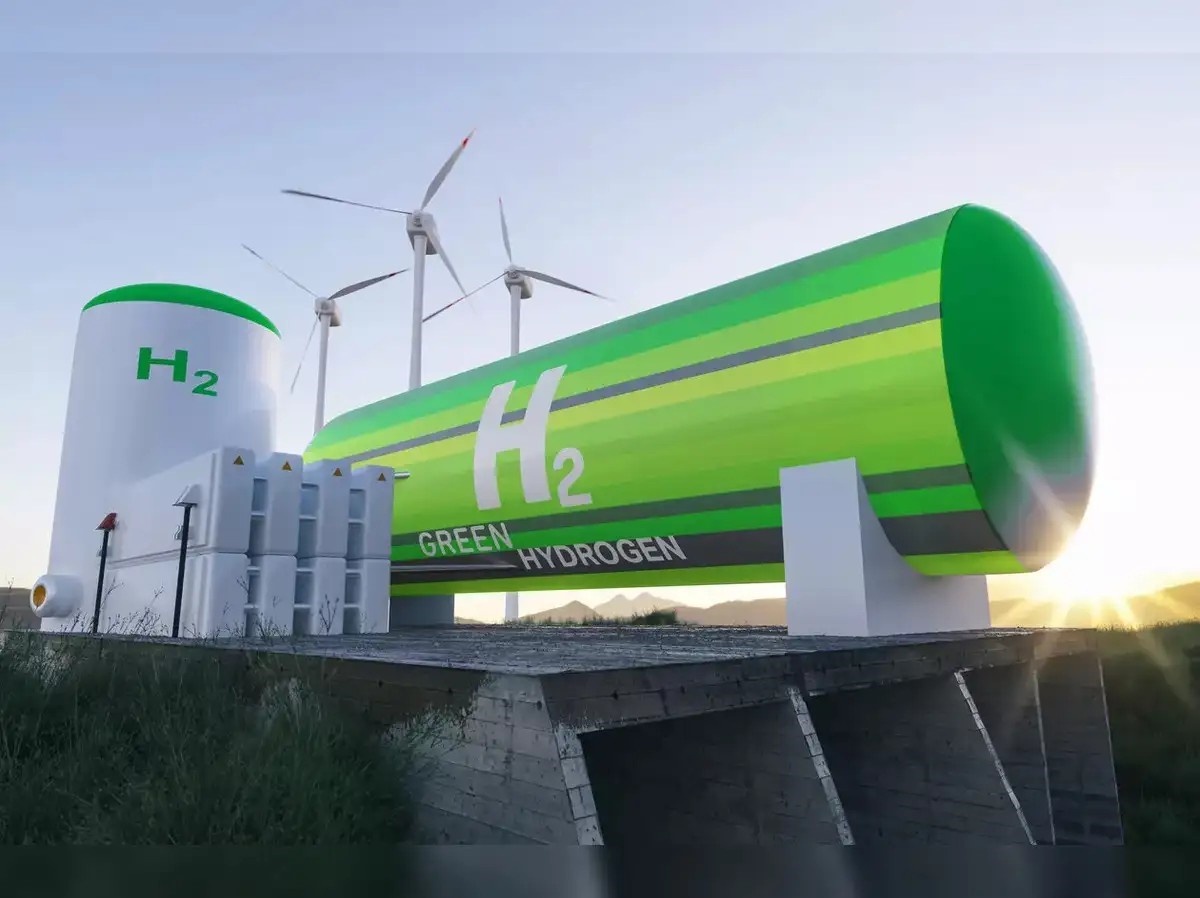Natural Hydrogen: Clean, Abundant, Low-Cost Fuel Source Emerging
Natural Hydrogen: Clean, Abundant, Low-Cost Fuel Source Emerging
Syllabus:
GS-2:
Government Policies & Interventions
GS-3:
Environmental Pollution & Degradation , Growth & Development ,Conservation
Focus:
Natural hydrogen is gaining global attention as a clean and potentially abundant energy source. Recent discoveries in France and promising geological zones in India have sparked renewed interest. With extraction costs as low as $1/kg, it could become a viable alternative to green and fossil fuel-based hydrogen production.
Natural Hydrogen – A Hidden Resource
The Promise of a Clean Future Fuel
- Hydrogen is gaining attention as a clean and efficient energy source that can play a major role in decarbonising the global economy.
- Traditionally, hydrogen has been produced using fossil fuels or renewable energy, but both methods come with economic or environmental costs.
- Natural hydrogen, also known as gold hydrogen, is now emerging as a potential game-changer due to its abundance, clean profile, and low cost of extraction.
What Makes It ‘Natural’?
- Natural hydrogen exists underground as a free gas, produced through geological processes like:
- Serpentinisation (interaction between water and iron-rich rocks)
- Radiolysis of water by radioactive minerals
- Decomposition of organic matter deep underground
- Unlike industrial hydrogen production, this form does not emit carbon or require intensive energy inputs.
Undersdtanding Hydrogen Energy:●Hydrogen is a clean, non-toxic, and highly combustible fuel with the molecular formula H₂. Sources and Production of Hydrogen: ●Abundant element, but rare in pure form; must be extracted from water or hydrocarbons. Types of Hydrogen (Color-Coded):
About Hydrogen Energy in India:● India formed the National Hydrogen Energy Board in 2003. |
Historical and Scientific Background:
Accidental Discovery in Mali
- In 1987, drillers in Bourakébougou, Mali, accidentally discovered a natural hydrogen reserve while drilling for water.
- A crew member’s cigarette ignited a hydrogen-rich gas at a depth of 108 metres.
- Later studies confirmed the gas was 98% hydrogen, a significant purity level.
From Curiosity to Strategic Resource
- For decades, natural hydrogen was dismissed as a geological oddity, as scientists believed it couldn’t form large, extractable reserves due to:
- Small molecular size of hydrogen
- High reactivity, leading to escape from porous rocks
- However, recent discoveries and growing energy demand have pushed geologists to reassess its potential.
Favourable Geological Zones
- Hydrogen-rich zones include areas with:
- Tectonic activity (e.g., Pyrenees, Alps, Himalayas)
- Coal seams and organic deposits
- Hot springs and fractured basement rocks
- Co-existence of helium and hydrogen indicates shared radioactive or thermal processes.
Global and Indian Reserves:
Worldwide Hydrogen Seepage Sites
- Over hundreds of hydrogen seeps have been identified in:
- Australia (Eyre Peninsula, Kangaroo Island)
- USA (Kansas, Nebraska)
- France, Spain, Albania, South Korea, Canada
- A 2022 USGS model suggests natural hydrogen could meet global demand for thousands of years.
- In 2025, 92 million tonnes of hydrogen were found in France’s Lorraine and Moselle regions, worth approximately $92 billion.
Natural Hydrogen Potential in India
- India’s natural hydrogen resources remain largely unexplored, but geological conditions show high potential, including:
- Andaman and Himalayan ophiolite complexes
- Cratons like Dharwar and Singhbhum
- Greenstone belts, sedimentary basins (Vindhyan, Cuddapah, Gondwana, Chhattisgarh)
- Hot spring zones and fractured rock formations
Exploration Challenges
- Despite its potential, geological mapping and exploration of hydrogen reserves are still in infancy globally and in India.
- The lack of standardised frameworks, coupled with uncertainty over commercial viability, poses significant hurdles.
Economic and Strategic Potential:
Cost-Effectiveness
- Unlike green hydrogen (which costs $3–$8/kg), natural hydrogen extraction could cost $1/kg or less, making it globally competitive.
- Extraction does not require electricity or carbon-emitting fuels, significantly reducing production-related carbon emissions.
Strategic Implications
- If exploited at scale, natural hydrogen could:
- Reduce fossil fuel dependency
- Strengthen energy security
- Aid in meeting climate targets under the Paris Agreement
- Offer long-term energy sustainability (estimated to last over 200 years with 2% commercial viability)
Industry Rush
- The number of companies exploring natural hydrogen has increased from 10 in 2020 to 40 in 2023.
- Major investments include:
- Koloma (U.S.): Raised $245 million in venture funding
- Bill Gates’ Breakthrough Energy Ventures
- BP and Rio Tinto have backed Snowfox Discovery (UK)
- The American Association of Petroleum Geologists has formed its first hydrogen committee, showing growing institutional interest.
Way Forward and Challenges:
Scientific Uncertainties
- It’s still unclear how much of the hydrogen can be tapped economically due to:
- Uncertainty about reserve concentration
- Difficulties in continuous gas flow
- Scattered nature of some deposits
Policy and Technological Gaps
- A dedicated policy framework for natural hydrogen is lacking in most countries, including India.
- Investment is needed in:
- Surveying and mapping techniques
- Pilot extraction technologies
- R&D in hydrogen storage and transportation
India’s Roadmap
- India should:
- Incorporate natural hydrogen into its National Hydrogen Mission
- Invest in geological surveys through bodies like GSI, ONGC, and DGH
- Build partnerships with countries already active in hydrogen exploration
- Explore public-private partnerships (PPP) for exploration and pilot-scale production
Conclusion:
- Natural hydrogen could be a reliable, abundant, and clean energy source for the future.
- With appropriate scientific investment, policy backing, and international collaboration, India and the world can leverage this resource for long-term energy security and environmental sustainability.
- This untapped fuel has the potential to revolutionise the global energy system, but the transition will require careful planning and significant exploration efforts.
Source: TH
Mains Practice Question:
Discuss the potential of natural hydrogen as a sustainable energy source in addressing global and national energy needs. Evaluate the challenges associated with its exploration and commercialisation. How can India leverage its geological advantage to integrate natural hydrogen into its clean energy transition roadmap?





